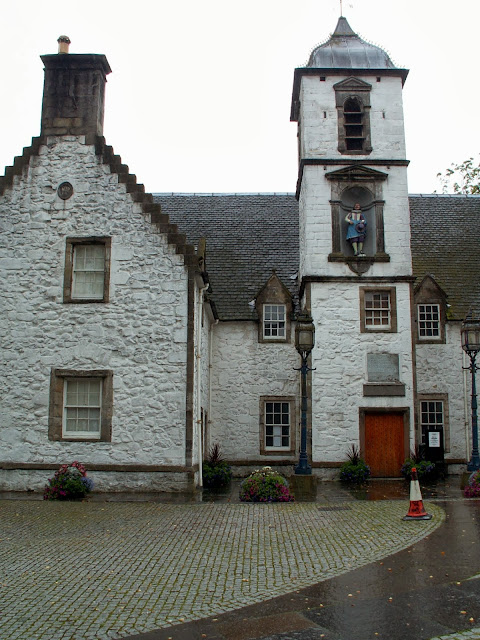The wild boy
A tiny gravestone stands just opposite the church porch of
St Mary’s church at Northchurch in Hertfordshire. It bears a simple inscription :
Peter
The
Wild Boy
1785
Peter was a German boy who was found almost wild in a
forest near Hanover England
Hospital benefactor
John Cowane was a prosperous Scottish merchant in 17th century Stirling
. In 1637, Mr Cowane endowed an
almshouse for poor members of the merchant guild, and Cowane’s Hospital can
still be seen today opposite the church near Stirling Castle midnight on new year’s eve, Auld Staney
Breeks, as the statue is
known locally, comes down from his lofty perch to dance in the courtyard! We are not told who has witnessed this
event!
Old Tristram
A rare alms box in Halifax Parish
Church
The Snake Catcher
A very fine marble stone in the old churchyard at
Brockenhurst in Hampshire marks the grave of an unusual New
Forest character Harry Mills who died in 1905 aged 67 years. Better known as ‘Brusher Mills’ he had
lived in an illegal shack in the forest for almost 30 years. Actually the shack was burned down just one
day before the 30 years required to claim the home and land upon which it stood
under ancient forest law. He was
known as ‘Brusher’ simply because of the meticulous way he brushed the village
cricket pitch. His main occupation
however was that of ‘snakecatcher’ and he is credited with having killed a
total of 3186 New Forest adders which he sold to London Zoo as live feed for
the larger snakes. The gravestone
depicts a carving of Mills near to his shack and several snakes. The local pub is called ‘The Snake
Catcher.’
The slave who made good
The churchyard at Kirkoswald near Ayr
in Scotland June 24
1774 aged 80 years. Scipio
was a former African slave who made good.
In the 18th century it was fashionable to employ black
servants and as early as 1702 a Captain Douglas of Mains in Dumbartonshire
brought a young boy from Guinea West Africa as a slave. He named the boy Scipio and when the
Captain’s daughter married John Kennedy of Culzean Castle
After 20 years with the family Scipio signed a legal
contract to continue service with the family for a further 19 years for twelve
Scottish pounds yearly, plus ‘a share of the drinks money’ ?
One argument against slavery was that it was offensive to
Christian teaching. However it was also
thought that as African tribes were not Christian, then slavery was beneficial
to ensure Christian teaching. Thus
Scipio was converted to Christianity in Scotland
Samboo
A simple stone slab
marks a lonely grave on the water’s edge at Sunderland Point overlooking Morecambe Bay Lancashire . A metal plate reads :
Here lies Poor Samboo
A faithful Negro who (attending his mafter
from the Weft Indies )
Died on his arrival at Sunderland
1796.
A nearby jetty was where cotton, first brought from the West Indies , was unloaded en route to the Lancashire mill towns.
The Lover’s
Tragedy
A
memorial stone which was erected in the churchyard at Bowes, Durham in 1848
reads:
The Lover’s Tragedy
Roger Wrightson jun. &
Martha Railton,
both of Bowes, buried in
one grave.
He died of a fever &
upon Tolling his passing bell she cried out,
‘My heart is broke’ and in
a few hours Expired thro love.
March 15 1714-15.
Such is the brief and
touching record contained in the parish register of burials.
Tradition is that the
grave was at the west end of the church directly beneath the bells.The sad history of these true and faithful lovers forms the subject of Mallets pathetic Ballad of Edwin and Emma.
The stone, which can be seen close to the west end of the church has weathered badly and the writing is almost worn away. A plaque with the wording was attached to the bottom of the stone in 2005 by the Parish Council































 The stone's detail
The stone's detail











